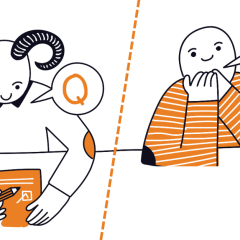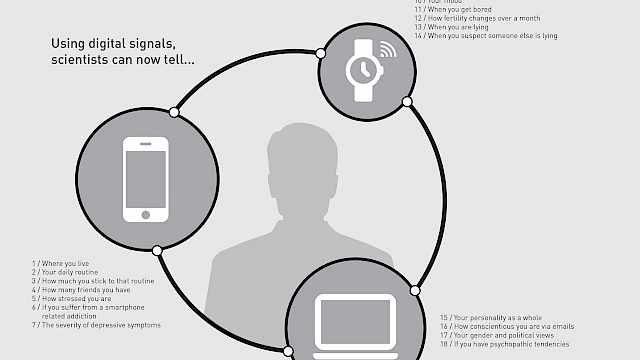Nonverbal communication typically refers to communication carried out in ways other than through words, including through nonverbal behavior. The subject has been addressed in thousands of scientific articles by a worldwide community of researchers in a variety of disciplines, including psychology, communication, and criminology. As well as academia, practitioners have shown interest in nonverbal behaviour, often as a means to increase their ability to understand others, even to spot liars. Security organisations are not spared. They are offered techniques to understand “body language”, which claim to allow the detection of hostile intents and threats through the observation of nonverbal behaviour.
Techniques to understand “body language” have been around for thousands of years. In a 3000-year-old ancient sacred text, it was claimed that someone trying to poison others would show specific behaviour, including shivering, rubbing their great toe along the ground, and trying to leave the house. More recently, the public has been exposed to techniques of this nature via film and television. The examples are many. These includes the 1983 movie Scarface where Tony Montana, played by Al Pacino, claimed that "The eyes, Chico. They never lie," and the 1998 film The Negotiator, where Danny Roman, played by Samuel L. Jackson, claimed that:
“I’m reading your eyes. The eyes can’t lie. Didn’t you know what I was doing? A quick lesson in lying. You see, this is what us real cops do. We study liars. Example. If I ask you a question about something visual, like your favorite colour, and your eyes go up and to the left. Well, neurophysiology tells us that your eyes go in that direction because you’re accessing the visual cortex. Therefore, you’re telling the truth. If your eyes go up and right, then you’re accessing the creative centres of the brain and we know you’re full of s**t.”
With the advent of social media, the popularity of techniques to “read body language” has been taken to a whole new level. “Body language” experts receive a staggering amount of attention, with millions of views on social media. In a TikTok video viewed more than 9 million times since 2021, it is claimed that the direction of a person’s gaze is a sign that someone is lying. In a separate TikTok video viewed more than 8 million times, Dr. Phil, an American TV personality, claims that the feet of liars “will be pointed towards the door because they want out”; akin to what was claimed 3000 years ago.
These claims are misconceptions about nonverbal behaviour. They are made even though decades of research has shown that nonverbal behaviour, including a person’s gaze and feet direction, is unreliable for detecting lies in face-to-face interactions, that there is no Pinocchio’s nose, and that misconceptions about nonverbal behaviour can result in severe consequences.
Techniques to understand ‘body language’ have been around for thousands of years. But with the advent of social media, their popularity has been taken to a whole new level.
The severe consequences
When disseminated via traditional and social media, misconceptions about nonverbal behaviour may seem entertaining. However, when misconceptions about nonverbal behaviour, or techniques that promote them, find their way in the hands of people in positions of influence, they can result in severe consequences. For example, in law enforcement contexts, police officers trained in such techniques may be convinced (erroneously) that suspects are lying. They may close down other valid areas of investigation in favour of finding more information in support of their incorrect hypothesis that the suspect is guilty, thus wasting police time and resources. They may even allow themselves to use coercive interviewing tactics which can result in false confessions. In courtrooms, misconceptions about nonverbal behaviour can influence witness credibility and, ultimately, the judges’ or jurors’ decision. This can happen in various jurisdictions, and sometimes, misconceptions are integral to written judgments. An example comes from a Canadian court:
“Having carefully observed the accused during his testimony and noted his great nervousness, his fleeting gaze and his numerous hesitations in cross-examination, the court is convinced that [the defendant] has simply forged his version of the facts according to the evidence disclosed, and that he thereby lied to the court in a shameless manner” (our translation)
However, law enforcement contexts and courtrooms are not the only places with a track record of using misconceptions about nonverbal behaviour. Security organisations are no exception. After 11 September 2001, the TSA (Transport Security Agency) set up the SPOT (Screening of Passengers by Observation Techniques) program to detect aviation security threats. However, when asked by the GAO (Government Accountability Office) to present the scientific evidence confirming the validity of the SPOT program, the TSA failed spectacularly. The TSA submitted 178 sources, but following an independent analysis, the GAO revealed that 175 of the 178 were irrelevant for assessing the validity of the SPOT program. The annual cost of the program was around $212 million. Despite this, the detection of hostile intents and threats through the observation of nonverbal behaviour is still ubiquitous within security contexts. A simple Google search for “body language” and “security” yields more than 19 million results, with a variety of security techniques being offered. The consequences of misconceptions about nonverbal behaviour should thus make distinguishing the wheat from the chaff a priority for organisations faced with safety and security issues.
Dubious Claims and Fallacies
There is not a silver bullet to instantly assess the quality of these techniques, but some characteristics are relevant. The following may help you to identify whether a technique is worthy of exploring its integration into practice.
1. Beware those who claim that it is possible to “read body language”
This claim is problematic as there is no such thing as a “language” of the body. Face and body movements lacks characteristics of a formal language, including the absence of a vocabulary. The meanings of face and body movements are often ambiguous and are dependent on their context, including other verbal and nonverbal behaviours, the identity of the interactants, and the settings where they take place.There is no dictionary of face and body movements meanings.
2. Beware those who use science to establish their credibility, but then fail to do it in relation to their own techniques
For example, proponents of these techniques may say from the outset that face and body movements cannot be “read” like words in a book. This is correct. They may even refer to “science” and claim that there is nothing like a Pinocchio’s nose. This is also correct. However, when presenting their techniques, they may then offer a variety of unfounded and discredited claims about nonverbal behaviour, including a myriad of facial expressions that, supposedly, can be monitored to gain insights on the psyche of others. In other words, they use a double standard. Science is useful to establish their credibility, but is disregarded when developing their techniques. At best, only parts of their techniques are based on scientific research, and typically, the evidence they consider is limited or disputed.
To give an example, a variety of “body language” experts stress the importance of establishing a baseline (the “normal” behaviour of an individual) and then look for deviations. This advice appeals to common sense. For example, a person seems to be doing well, but after mentioning a certain subject, becomes silent and starts to cry. The deviation from “normal” behaviour will draw attention. However, in practice, it is very difficult, if not impossible to implement this advice. For how long should an individual be observed? Should all face and body movements be weighted the same? Is what is said considered? How is it considered? And when does face and body movement fall outside “normal”? We further doubt the value of establishing a baseline, as stressed by “body language” experts, because in the same situation, different people behave differently, but also, and perhaps more importantly, in different situations, the same person behaves differently. Finally, not only is the advice to establish a baseline often poorly explained, if not explained at all, but to our knowledge, there is no convincing evidence that it can be taught and applied to security practitioners.
Attention should also be paid to the paradigm of any experimental research that is used to provide evidence of the success of techniques to predict hostile intents and threats through understanding “body language”. For example, when experiments are almost exclusively conducted with interviewees sitting in a room, findings cannot be directly applied to settings such as walking in an airport.
3. Beware the use of classic influence principles to sell the techniques
Some companies may use an appeal to authority. They will promote the name of their past clients, the fact that they have taught their techniques to various law enforcement agencies, or that they themselves were once part of one of these agencies. However, having taught or worked for the FBI, DEA or CIA is not proof of the efficacy of a technique, any more than having a celebrity endorsement is proof that a skin cream works. That a technique has been used for a long time also does not mean that it works. This is an appeal to tradition. Take Dr. Phil’s claim that feet direction is a sign of lying. Finally, the reputation of a technique is sometimes highlighted with testimonials from satisfied clients. However, such testimonials are not proof of its efficacy. They are anecdotal evidence. People who use the technique may be biased towards noticing the hits (and ignoring the misses), which can lead to an overestimation of accuracy. Furthermore, testimonials from dissatisfied clients are rarely published.
In summary: exercise caution!
People promoting questionable security techniques are probably doing so in all honesty, sincerely believing that they work. However, since these techniques are often based on misconceptions, they can result in severe consequences. And even if parts of the techniques are based on sound scientific research, the need for caution remains. This is why organisations faced with safety and security issues should be careful when opening their doors to techniques to detect hostile intents and threats through the observation of nonverbal behaviour. Beyond the points above that should prompt initial questioning, organisations should take the time to thoroughly evaluate what they are offered. There are several ways of doing this. One is to consider the UK’s National Protective Security Authority guidance on behavioural detection, especially their checklist for measuring the suitability and effectiveness of techniques to detect hostile intents and threats. If they fail to exercise caution, organisations could be implementing techniques of no more value than those promoted by Al Pacino, Samuel L. Jackson and Dr. Phil.
Read more
Denault, V., & Zloteanu, M. (2022). Darwin’s illegitimate children: how body language experts undermine Darwin’s legacy. Evolutionary Human Sciences. https://doi.org/10.1017/ehs.2022.50
Denault, V., Plusquellec, P., Jupe, L. M., St-Yves, M., Dunbar, N. E., Hartwig, M., … van Koppen, P. J. (2020). The analysis of nonverbal communication: The dangers of pseudoscience in security and justice contexts. Anuario de Psicología Jurídica, 30, 1-12. http://doi.org/10.5093/apj2019a9
Hall, J. A., Horgan, T. G., & Murphy, N. A. (2019). Nonverbal communication. Annual Review of Psychology, 70, 271–294. https://doi.org/10.1146/annurev-psych-010418-103145
Mann, S., Deeb, H., Vrij, A., Hope, L., & Pontigia, L. (2020). Detecting smugglers: identifying strategies and behaviors in individuals in possession of illicit objects. Applied Cognitive Psychology, 34, 372–386. https://doi.org/10.1002/acp.3622
Mann, S., Vrij, A., Nasholm, E., Warmelink, L., Leal, S., & Forrester, D. (2012). The direction of deception: Neuro-Linguistic Programming as a lie detection tool. Journal of Police and Criminal Psychology, 27, 160-166. http://doi.org/10.1007/s11896-011-9097-8
Patterson, M. L., Fridlund, A. J., & Crivelli, C. (2023). Four misconceptions about nonverbal communication. Perspectives on Psychological Science. https://doi.org/10.1177/17456916221148142
Plusquellec, P., & Denault, V. (2018). The 1000 most cited papers on visible nonverbal behavior: A bibliometric analysis. Journal of Nonverbal Behavior, 42(3), 347-377. http://doi.org/10.1007/s10919-018-0280-9
Sweet, D. M., Meissner C. A., & Atkinson D. J. (2017). Assessing law enforcement performance in behavior-based threat detection tasks involving a concealed weapon or device. Law and Human Behavior, 41, 411-421.
National Protective Security Authority (2023). Behavioural Detection. Retrieved from https://www.npsa.gov.uk/behavioural-detection-0
Vrij, A., Hartwig, M., & Granhag, P.A. (2019). Reading lies: Nonverbal communication and deception. Annual Review of Psychology, 70(1), 295–317.
Copyright Information
Image credit: © Krakenimages.com edited by K.Brennan | stock.adobe.com








